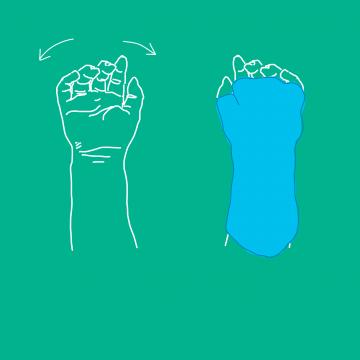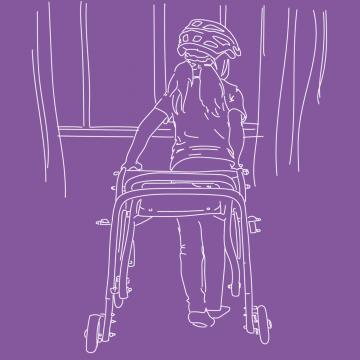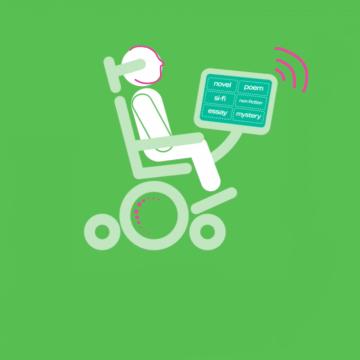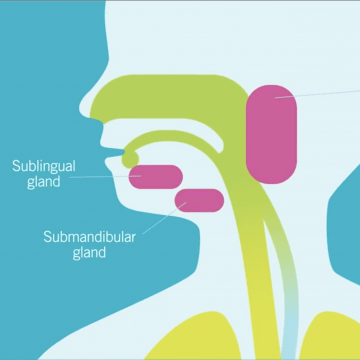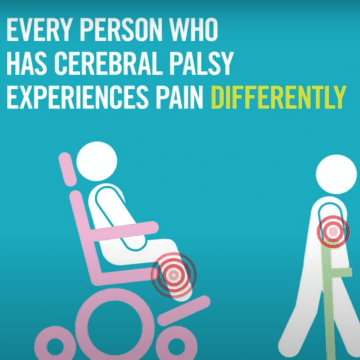Explore topics that you need to know
-

What is Cerebral Palsy? Cerebral Palsy (CP) is the most common lifelong motor disability impacting more than 17,000,000 people around the world. CP is the result of damage to the developing brain and describes a group of movement disorders that affect a person’s ability to move and maintain balance and posture. -

Adults & Adolescence Explore information from experts and stories from people with CP who have experienced adolescence and adulthood. The teen years and transitioning to adulthood, brings new considerations for a person with cerebral palsy and their family. Additionally, as a person with cerebral palsy ages, there are new factors to consider including wear and tear on joints, chronic pain and other health issues that come along with age for people with and without cerebral palsy. There is so much more to learn in this area and we are committed to bringing you the most up to date research in the field. -

Arm & Hand Function Hand function is affected in more than 60% of individuals with cerebral palsy to some degree. In milder types of CP, this may only mean a little bit of weakness in hands and fingers. In more severe cases, people may not be able to adequately use one of both of their hands. Treatments targeting upper limb function aim to improve functional abilities, promote functional independence, and/or reduce muscle tone. -

Accessible Design & Technology We believe accessible environments are designed to meet the needs of people of all abilities. By using accessible technology—like screen readers, real-time captioning, and ergonomic tools—and following universal design principles, you can make your home and workplace safer, easier to use, and more comfortable for everyone. There are lots of resources available, including stories from people with first-hand experience and expert advice on how to improve accessibility across all settings. You can browse these stories and get tips from universal design experts to help create spaces that work well for everyone. -

Building A Care Team For individuals with cerebral palsy and their families, finding trusted providers and caregivers is integral to health, quality of life, and well being. -

Communication Communication in all its various forms is the way people interact and relate with their world.People with cerebral palsy may experience difficulties with communication in areas such as speech, the development of gesture and facial expression, receptive and expressive language and voice production. Learning to communicate with others, and ensuring that you’re understood in return, is a vital part of every child’s early development. Speech language pathologists and therapists can make assessments and put together recommendations. For those with more severe oral motor impairments assistive or augmentative communication and technologies can help. -

Early Diagnosis Diagnosis of CP can and should happen as early as possible. Cerebral palsy, except in its mildest forms, is often evident in the first year of life and it’s important to get a diagnosis as early as possible in order to improve long term outcomes. Early diagnosis begins with your child's medical history and could involve your doctor doing a combination of neuroimaging and neurological, and motor assessments. -

Exercise, Sports & Recreation Exercise and physical activity are important for the health and well-being of everyone, yet this area is overlooked for people with cerebral palsy. Sports, physical activity, and recreation is very important for individuals with cerebral palsy of all ages and can result in better quality of life, increased self-esteem and independence. Most activities and sports can be adapted or modified so everyone can participate. Look for activities you are interested in and get moving! -

Early Intervention In the most general sense, early intervention for cerebral palsy refers to starting therapeutic approaches as early as possible to improve the development of a baby or young child with a delay or identified motor issue. An early intervention plan should be developed in coordination with families/caregivers to create the best possible outcomes for both the child and family. -

Gait Development & Movement Analysis Cerebral palsy may lead to a number of bone, joint and muscle problems that effect walking (gait) and mobility. Spasticity or contractures of muscles can cause the knees to flex at the hip knee and ankle which can cause difficulty or increased energy requirement of walking. Internal rotation of the thigh bone, external rotation of the lower legs, and severe flat feet combine to limit the "push-off" ability to move forward, making walking slow. When the muscles are too strong on one side and too weak on the other side, the muscle imbalance can result in gait abnormalities or dysfunction -

Genetics Well-known risk factors for CP include environmental injuries like premature birth, lack of oxygen, bleeding in the brain, and infections around the time of birth, however new discoveries indicate that genetics should be added to the list. -

Growth and Nutrition Good nutrition is important to ensure optimal growth and healthy muscle and bone development across the lifespan. Children and adults with cerebral palsy often face difficulties with eating and drinking that can be improved with proper assessment and interventions. It is important to know that there are specific growth charts, assessments and approaches for individuals with cerebral palsy that can help improve their nutrition and growth. -

Hygiene and Self Care Adopting and maintaining good personal hygiene and self-care habits are important for health, wellness, social acceptance, and the prevention of illness. Though having cerebral palsy does not cause poor hygiene, physical impairments associated with cerebral palsy can make routine hygiene habits difficult for individuals and their caregivers. This section looks at common hygiene and self-care issues that arise with cerebral palsy and offers insights, tools, and techniques that can help develop and maintain good habits. -

Legal & Benefits Often we need extra help navigating benefits such as Social Security/Disability, Medicaid, Medicare, Medicaid Waivers and the legal system. In this section, we are providing resources that can help with these needs across the lifespan. -

Mental Health and Wellness Explore timely support resources, research and information from experts including recruiting studies, and helpful tips or advice as well stories from people with CP who have experienced mental health challenges. -

Mobility Equipment and Orthotics Most people with cerebral palsy utilize some form of equipment to assist with mobility or positioning. These can range from custom orthotics to elaborate powered wheelchairs, gait trainers, walkers, and more. Each individual is different and equipment should always be tailored to meet the unique needs of the user. -

Pain Pain is common in people with cerebral palsy with over 60% of individuals with CP reporting that they experience pain. This section looks at common causes for pain, assessments for identifying pain as well as emerging treatments. Left untreated pain can adversely impact activities, participation, and quality of life. -

School & Education Ensuring that a K-12 student (and beyond) with cerebral palsy accesses their educational environment successfully is a top priority for most families. A variety of accommodations addressing the classroom, testing, vision, communication, school activities and other considerations may be needed for the student to achieve their full potential. -

Sleep Sleep problems are common in people with cerebral palsy and can adversely impact activities, participation, and quality of life. -

Travel Traveling with a physical disability provides new opportunities and unique challenges! -

Treatment Options There is no standard therapy that works for every type and every person with CP. Many factors should be considered when putting together a treatment plan. Once a CP diagnosis is made and the type of CP is determined, a team of health care professionals will work to develop a treatment plan to meet your goals. -

-

Women's Health Women with Cerebral Palsy face many challenges. Finding adequate healthcare shouldn't be one of them. The Cerebral Palsy Foundation is committed to improving the health of women with physical disabilities through our Women's Health Initiative. Learn more from our experts and from women themselves. -

Workplace and Employment Individuals with cerebral palsy and other disabilities have the right to pursue employment of their choosing but often encounter obstacles in obtaining and keeping meaningful employment. This topic section aims to provide insights and resources into the many employment barriers and solutions to ensure wholly equal and meaningful employment for individuals with cerebral palsy.



